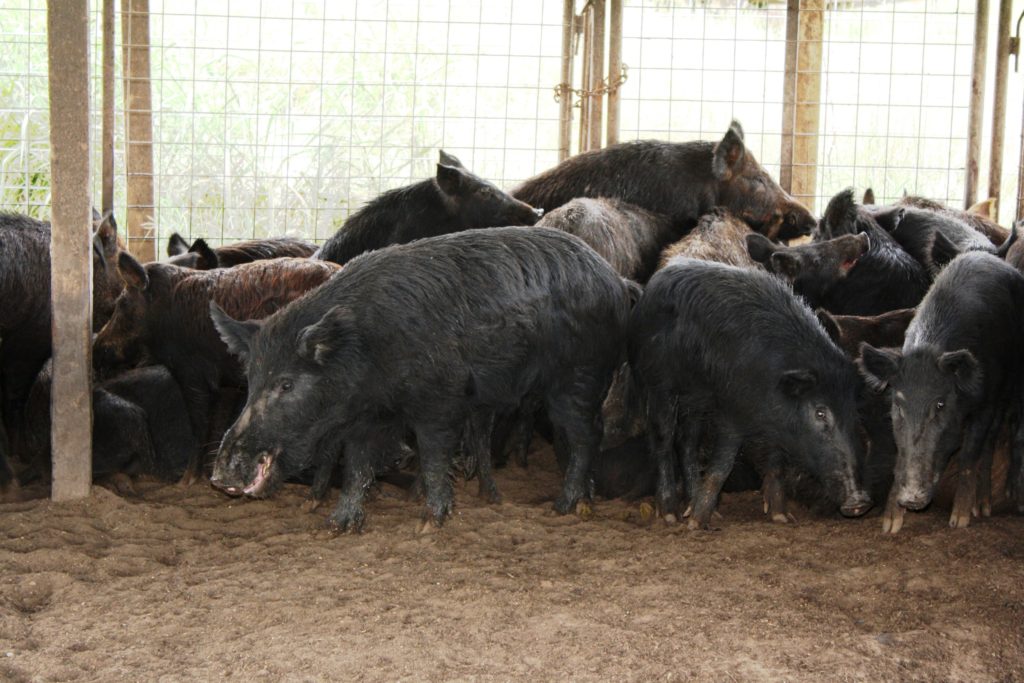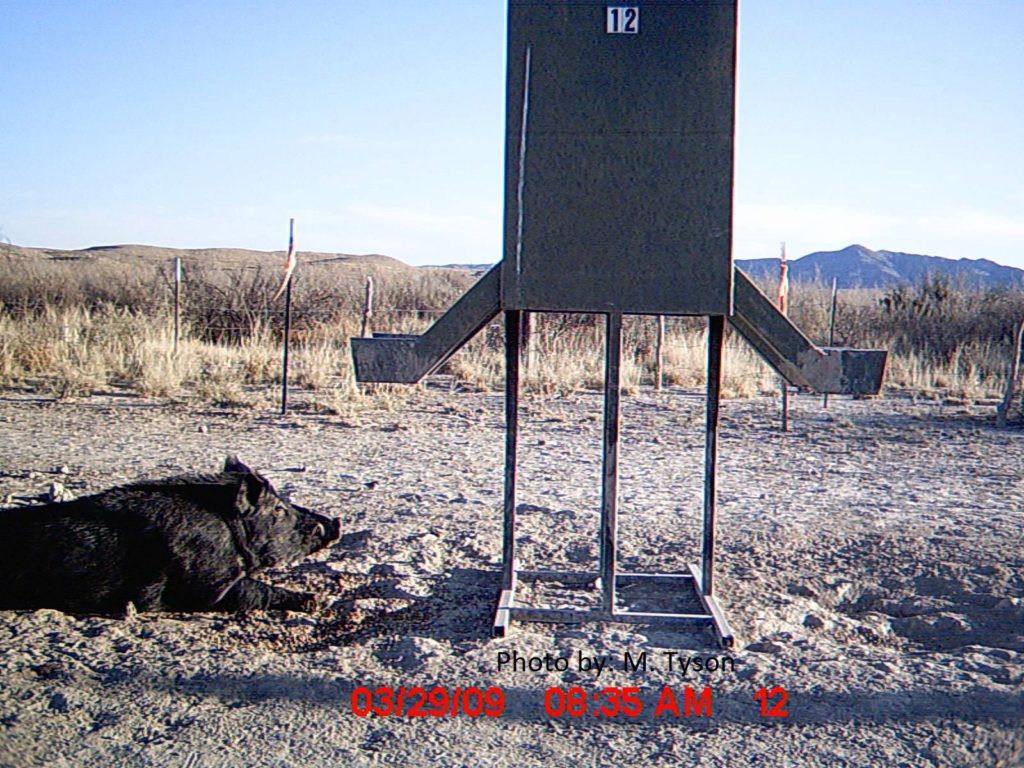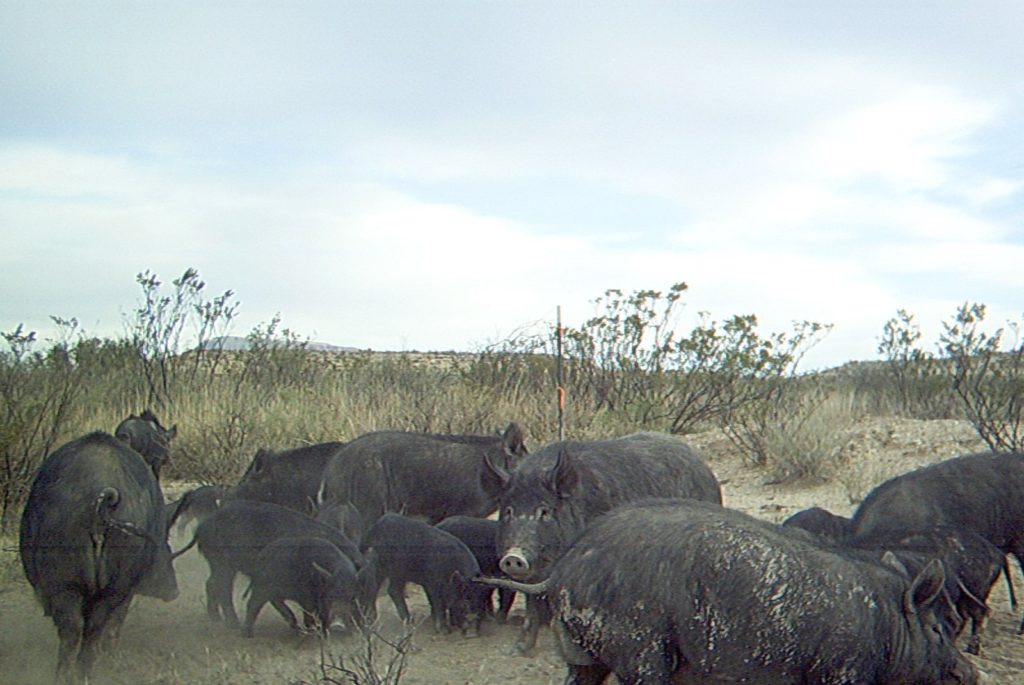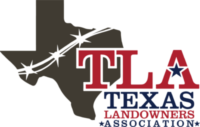
Feral Hogs and White-tailed Deer
Feral hogs: A whitetail’s predator and competitor
By: Mark Tyson, M.S.
Extension Associate, Texas A&M AgriLife Extension Service
Texas is home to an estimated 3.6 million whitetail deer, supporting the highest densities in the United States.
Texans can claim yet another accolade: an estimated 2.6 million feral hogs, the largest population in the nation.
A statewide attitude survey on feral hogs asked Texans about their opinions of feral hogs, respondents could answer: “for”, “against”, “neutral” or “mixed feelings”. The survey found that “mixed feelings” and “against” were the most common responses while “neutral” and “for” were reported by considerably fewer respondents (Rollins 1993). Whitetail deer provide hunting and wildlife viewing opportunities to over 1 million people annually in Texas. As a land manager it is important to decide what balance of the two species is right for you and your piece of Texas.
Feral Hogs are a Predator of White-tailed Deer
Bobcats, coyotes, and mountain lions are the major species in Texas thought to impact whitetail populations through direct predation. While there are few reports that exist concerning direct predation on whitetails from feral hogs, there are numerous reports of feral hogs preying on livestock (Choquenot et al. 1997, Pavlov et al. 1981, Plant et al. 1978).
The extent to which feral hogs prey on whitetails remains to be discovered, notably because many of the remains are never discovered. Beach (1993) reported on the consumption of lambs and kid goats by feral hogs. “There are no carcasses present to detect, examine or attract vultures. Frequently, even when predation is considered, the pig escapes suspicion because people generally underestimate the hog’s capabilities as a predator” (Beach 1993).

Feral Hogs Compete with White-tailed Deer
While research has not reported the feral hog as a major direct predator of whitetails, they do have the potential to impact whitetail populations through a different kind of predation; predation on vegetation.
Diet research conducted in Texas suggests that both whitetail deer and feral hog diets consist primarily of vegetation (Adkins and Harveson 2006, Armstrong and Young 2000, Lucia et al. 1999). Feral hogs consume preferred deer foods such as seasonally abundant mast. Dillard et al. (2005) reported that oak mast is highly used and seasonally preferred as a fall food source for whitetails in the cross timbers and prairies region of Texas.
Sweitzer and Van Vuren (2002) reported that feral hogs significantly reduced the availability of acorns for germination and consumption by native wildlife. Additionaly, feral hogs actually have a competitive advantage over deer when it comes to mast consumption, since they feed both by sight and smell. Taylor and Hellgren (1997) reported observing hogs excluding deer from eating acorns.
For information on how to us Game Cameras to manage Wild Hogs, check out our article Using Game Cameras to control Feral Hogs.
While consumption of mast such as acorns is just one example of direct competition between whitetails and feral hogs, let’s talk about one that may hit closer to your wallet. Texans spend an estimated $50 million annually to feed 300 million pounds of corn to whitetails and other wildlife (N. Wilkins, unpublished data). This corn is often intended as a supplement or bait for whitetails, but can end up being consumed by feral hogs.
Feral hogs exhibit a dominant presence at feeders, often discouraging whitetails from utilizing the supplemental feed. Rattan et al (2009) found that a 28- or 34-inch exclusion fence placed around deer feeders can prevent the hogs from reaching the supplemental feed while allowing whitetails access.
Where do you stand?
Understanding that feral hogs are both a predator and a competitor of whitetails, each land manager has a value decision to make concerning their piece of Texas. A whitetail deer management plan is primarily focused on two main factors: habitat management and population management.
Is there a place for feral hogs in your whitetail deer management plan? I would argue that there should be. Reducing feral hog populations on your property can have a positive impact on whitetails and the ecosystem as a whole.

Feral hog management
Modeling data suggests that Texans need to harvest 1,716,000 feral hogs annually to hold populations steady (Timmons et al 2012). In 2010, Texas sold 1,245,532 hunting licenses; conversely, only 753,646 feral hogs were estimated to have been harvested that year. We are not going to shoot our way out of the feral hog problem; instead, a multi-faceted approach is needed to combat feral hogs in Texas.
Legal methods for reducing feral hog populations in Texas include shooting, trapping, trained dogs, and snaring. Strategically using each of these legal techniques will provide the best results for the time and effort invested.
To learn more about feral hogs and legal population reduction strategies, visit our website the Texas A&M Feral Hog Website OR email Mark Tyson directly at mark.tyson@ag.tamu.edu.
